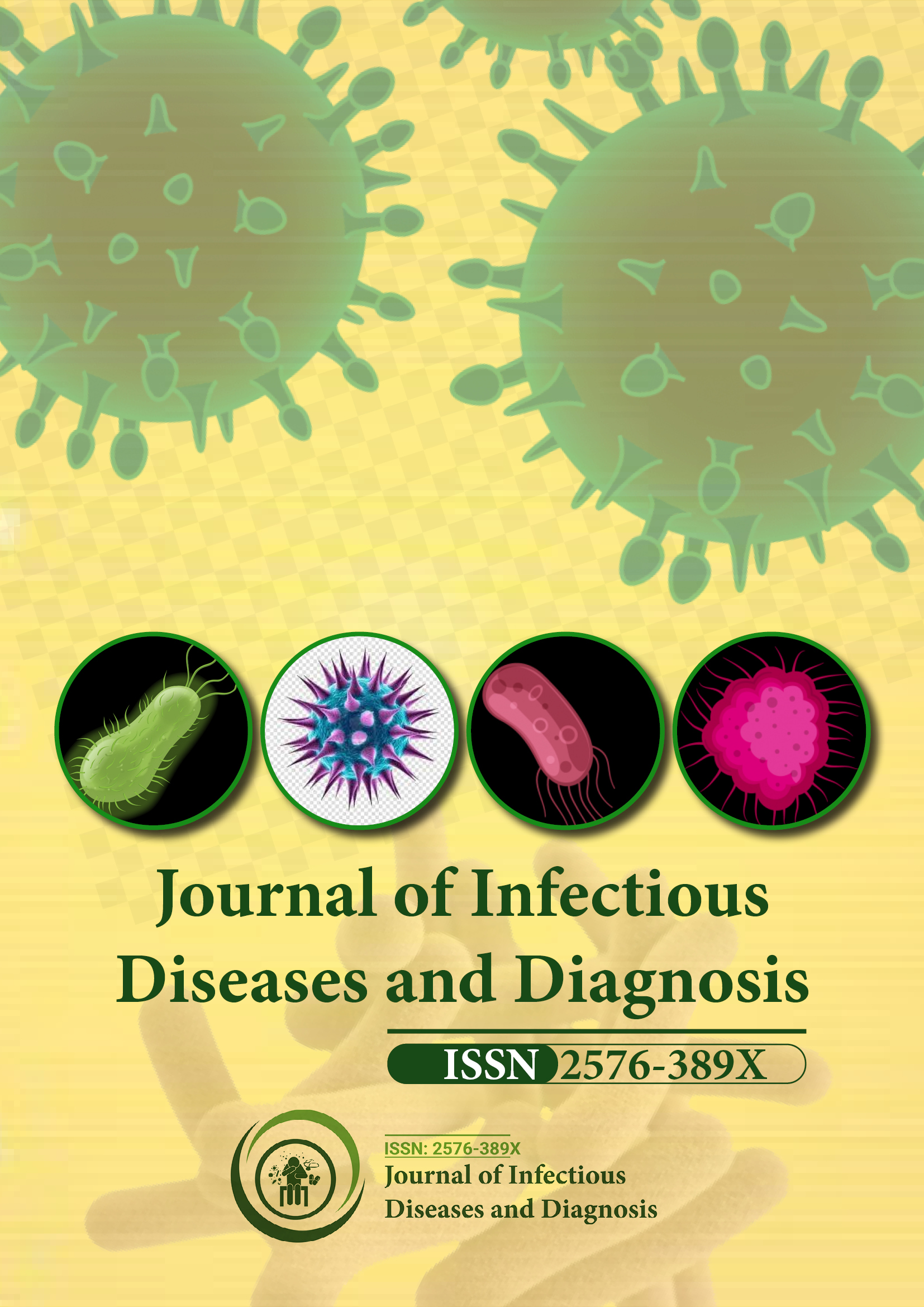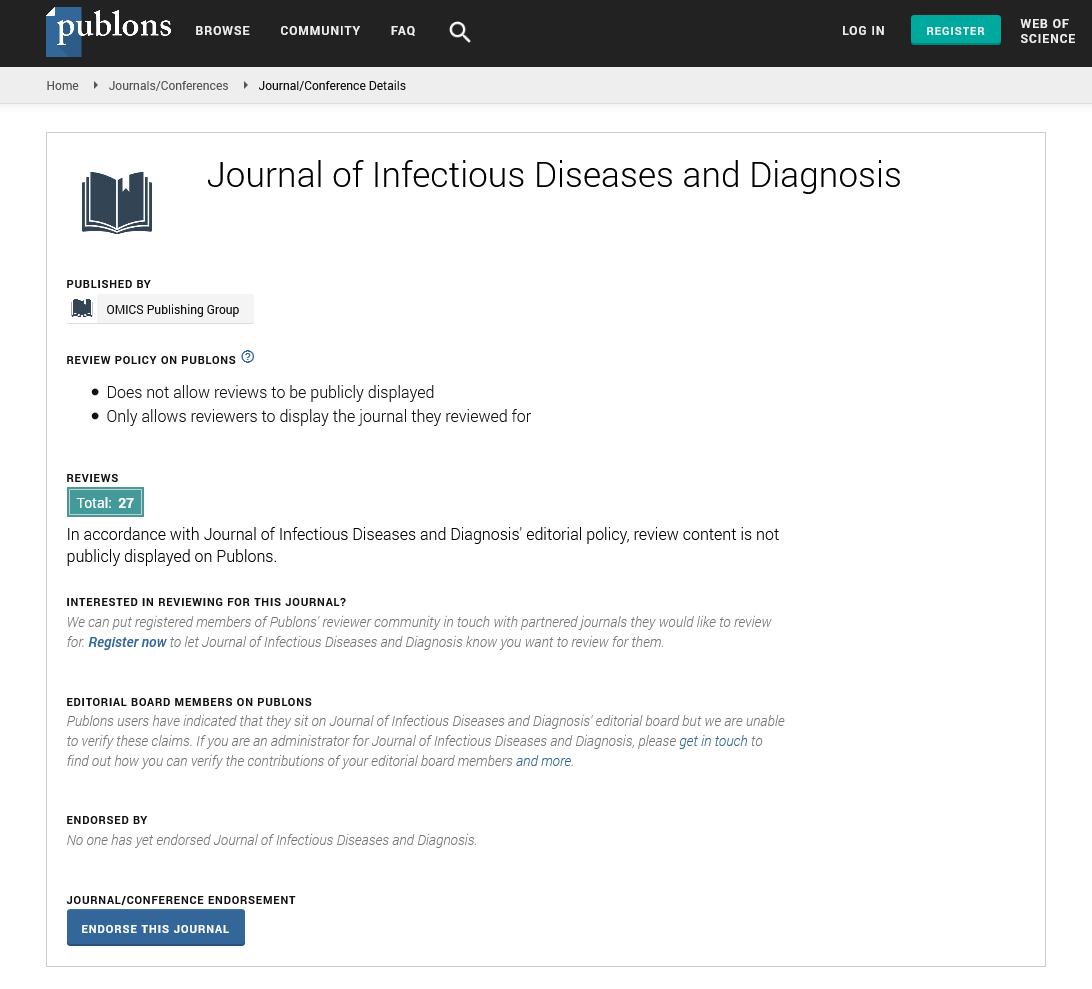Indexed In
- RefSeek
- Hamdard University
- EBSCO A-Z
- Publons
- Euro Pub
- Google Scholar
Useful Links
Share This Page
Journal Flyer

Open Access Journals
- Agri and Aquaculture
- Biochemistry
- Bioinformatics & Systems Biology
- Business & Management
- Chemistry
- Clinical Sciences
- Engineering
- Food & Nutrition
- General Science
- Genetics & Molecular Biology
- Immunology & Microbiology
- Medical Sciences
- Neuroscience & Psychology
- Nursing & Health Care
- Pharmaceutical Sciences
Perspective - (2024) Volume 9, Issue 4
Functional Significance of Defective Bunyavirus Particles in Viral Replication and Spread
Mihnea Bostina*Received: 03-Jun-2024, Manuscript No. JIDD-24-26516; Editor assigned: 05-Jun-2024, Pre QC No. JIDD-24-26516 (PQ); Reviewed: 19-Jun-2024, QC No. JIDD-24-26516; Revised: 26-Jun-2024, Manuscript No. JIDD-24-26516 (R); Published: 03-Jul-2024, DOI: 10.35248/2576-389X.24.09.281
Description
Bunyaviruses, a diverse family of RNA viruses, have long been recognized for their complex interactions within host cells and their ability to cause various diseases in humans and animals. Recent research has highlights the fascinating role of incomplete bunyavirus particles, also known as Defective Interfering Particles (DIPs), in viral infection and spread. These particles, which lack certain essential genomic segments, can effectively cooperate with complete viral particles to facilitate infection and dissemination.
Incomplete bunyavirus particles arise naturally during the replication process. Errors in genome replication lead to the production of these defective particles, which, although structurally similar to complete viruses, are missing some genetic material necessary for independent replication. For a long time, these incomplete particles were thought to be mere by products of viral replication with little to no functional significance. However, emerging evidence indicates that they play a vital role in the viral life cycle.
One of the key ways incomplete particles contribute to viral dynamics is by interfering with the replication of complete viruses. When DIPs infect a cell, they can compete with fulllength viral particles for replication machinery and cellular resources. This competition can reduce the replication efficiency of the complete virus, potentially attenuating the overall pathogenicity of the infection. This attenuation might appear counterintuitive, but it can provide an evolutionary advantage. By reducing the virulence, the host organism might survive longer, thereby increasing the window for the virus to be transmitted to new hosts. This prolonged transmission period is beneficial for the virus's overall propagation within a population.
Moreover, incomplete particles can engage in cooperative interactions with complete viruses to facilitate infection and spread. Studies have shown that DIPs can complement each other and the complete particles within a single infected cell. For instance, if multiple incomplete particles collectively contain the full complement of viral genes, they can together support the replication and assembly of new infectious virions. This complementation allows the virus to maintain its infection cycle even when individual particles lack essential genomic segments.
This cooperative behavior is particularly significant in the context of high Multiplicity of Infection (MOI) scenarios, where cells are simultaneously infected with multiple viral particles. Under such conditions, the likelihood of complementation between incomplete and complete particles increases, enhancing the overall efficiency of viral spread. This phenomenon underscores the importance of studying viral infections in a comprehensive way, considering not just individual particles but the collective interactions within the infected host.
The presence of incomplete particles also poses challenges and opportunities for developing antiviral strategies. On one hand, their ability to interfere with complete virus replication suggests that they could be utilized as a natural form of viral attenuation. Engineering or promoting the production of DIPs could be a novel approach to reduce the virulence of bunyavirus infections, thereby mitigating disease severity. On the other hand, the cooperative interactions between incomplete and complete particles complicate efforts to fully eradicate the virus. Effective antiviral strategies would need to account for and target these interactions to disrupt the viral life cycle comprehensively.
In addition to their role in modulating viral replication and spread, incomplete bunyavirus particles have implications for viral evolution. The generation of DIPs introduces genetic diversity within the viral population. This diversity can drive the selection of viral variants with enhanced fitness, particularly under selective pressures such as immune responses or antiviral treatments. By contributing to the genetic mosaic of the viral population, incomplete particles play a role in the adaptive evolution of bunyaviruses.
Understanding the role of incomplete bunyavirus particles in infection and spread provides valuable insights into the complexity of viral life cycles. It highlights the adaptive strategies that viruses employ to optimize their replication and transmission, even when faced with genomic defects. The study of DIPs also underscores the importance of considering viral populations as dynamic and interactive systems rather than static entities.
Conclusion
In conclusion, incomplete bunyavirus particles, despite lacking essential genomic segments, significantly influence viral infection and spread through interference and cooperative interactions with complete viral particles. These defective particles modulate viral dynamics by competing for cellular resources, facilitating complementation, and contributing to genetic diversity. Recognizing their role opens new avenues for understanding viral evolution and developing innovative antiviral strategies. This area of research emphasizes the need for a comprehensive approach to studying viral infections, considering the intricate interplay between different viral components within the host.
Citation: Bostina M (2024) Functional Significance of Defective Bunyavirus Particles in Viral Replication and Spread. J Infect Dis Diagn. 9:281.
Copyright: © 2024 Bostina M. This is an open-access article distributed under the terms of the Creative Commons Attribution License, which permits unrestricted use, distribution, and reproduction in any medium, provided the original author and source are credited.

